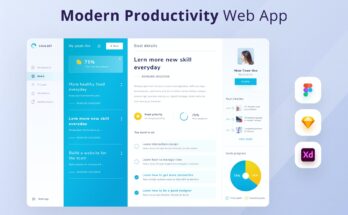At present, when numerous browsers prevail in the digital market, it becomes pretty tough to provide a perfect user experience. The constantly changing web technologies and the various tastes of the users create a never-ending problem for any organization: the cross-browser challenge. This is where cross-browser testing fits in.
It is the highly detailed process of testing website and application functionality across different browsers and devices that become the keystone to successful web development.
Introduction to Cross-Browser Testing
Cross-browser testing is a systematic process that tests website and application functionality across different browsers and devices. It simulates real-world user scenarios and identifies any inconsistencies in rendering and functionality across different versions and operating systems. A team of testers ensures a consistent and satisfactory user experience across all devices and browsers.
Diversity in Browsers, Versions, and Devices
Variety in cross-browser testing, browsers, versions, and devices poses a multi-dimensional challenge. This requires nuanced understanding and a strategic approach. This diversity explicitly affects the feasibility and reliability of web applications over a large spectrum of user environments. We will cover each dimension of this challenge, along with some comprehensive solutions.
The landscape for a web browser is highly fragmented, including key players like Google Chrome, Mozilla Firefox, Microsoft Edge, Safari, and others. All of them have their rendering engine inward, which interprets HTML, CSS, and JavaScript a bit differently.
Also, web content rendering and behavior vary across different browsers and versions of the same browser. Users may not upgrade to the latest version, causing web applications to need to support older versions to reach as many people as possible. This is because users may not upgrade to the latest version.
The Ever-Shifting Sands: Why Cross-Browser Testing Matters?
A potential client experiencing layout issues or broken features on an organization’s website can lead to frustration and lost potential, as inconsistent rendering across browsers can result in mixed-up users and ultimately, abandonment.
So cross-browser testing comes to the rescue, it is the process of systematic testing of website functionality across different browsers and devices, solving compatibility problems, to provide all users with a smooth and reliable experience irrespective of the choice of browser.
The Pitfalls of Neglecting Cross-Browser Testing
If a user encounters a layout or broken feature on a website, it can lead to frustration and abandonment. Inconsistent rendering across different browsers can lead to compatibility issues, causing users to abandon the site. It’s crucial to address these issues before they negatively impact the user base, ensuring an uninterrupted experience for all users, regardless of their browser preference.
The Limitations of Cross-Browser Testing
Testing across browsers may be one of the most strongly required processes for a developer to ensure continuity of user experience on all other browsers, but it has its limitations. Here are a few things that you must remember before stepping onto the testing floor:
- The Ever-Evolving Landscape
Technology is like a chameleon, always on the move. New browser versions and updates to these browsers themselves, security patches, all of them keep coming at you. Running tests against every single configuration is unthinkable while keeping pace with the very latest browser iterations would already seem impossible.
- The User Variable
Human behavior is highly variable. As much as Cross-Browser Testing x-rays most of the technical issues, it cannot assure that a user will have an ideal experience. It is still very important to conduct usability testing and feedback to learn how real users use your website or application.
- Automation Limitations
While automation tools are very useful, they cannot simulate everything that a user can. Complicated functionalities or problems with nuanced visuals sometimes may not get picked up in automated testing and will need to be checked manually.
Though these limitations exist, our understanding of them puts us at a very realistic standpoint toward cross-browser testing. In the following portion that we will cover, we will undoubtedly go through the real benefits of this practice and how one can create a strategic approach to ensure successful performance across this vast web stage.
The Benefits of Cross-Browser Testing
Cross-browser testing is generally seen as a development process obstacle. It has many advantages that can grossly contribute to the success of your website. There are, of course, some limitations, but, when you consider the benefits, there is a compelling picture of cross-browser testing.
Let’s further analyze how strategic testing can improve your website and user experience.
- Enhanced User Experience
If a website works seamlessly on all browsers, then it impresses and satisfies users. This reduces the chances of frustrating inconsistencies or broken features, improving the overall experience.
- Increased Accessibility
Cross-browser testing can make sure that your website reaches the large group of users including all those who have disabilities and would need to use particular features in their browsers to compensate for this disability or other assistive technologies.
- Improved Search Engine Optimization (SEO)
Most of the time, search engines consider the mobile-friendliness and cross-browser compatibility of a website when ranking. The better it renders across various browsers, the more likely the website will move up on the search engines and become visible.
- Reduced Development Costs
Cross-browser testing helps in catching and fixing the bugs right at the start of the development cycle, saving both time and resources rather than correcting issues once the website is launched.
Cross-browser testing offers numerous benefits beyond functionality, such as ensuring a seamless experience across all platforms, trust, reachability, credibility in search, and cost reduction. By embracing this process, you can create a website that serves more people and succeeds in the fast-paced digital world, thereby enhancing the overall user experience.
Strategies for Ensuring Flawless User Experience Across Browsers
It’s like rethinking innovation with a moving target in this ever-shifting Web landscape. Apply a strategy in cross-browser testing to ensure an uninterrupted user experience that keeps them interested and wanting more. Here, we will consider the important strategies at work in enabling organizations to close the gap between browsers and present one consistent experience across them.
- Prioritize Testing
Understanding your target audience is crucial for effective marketing. Conduct thorough research and identify the most popular browsers for testing purposes. This will ensure that resources are allocated appropriately and focus on the most important user experience. A satisfied user on their preferred browser is more likely to convert to your brand.
- Stay Updated
The digital world is constantly evolving, with browsers constantly updating and security patches. It can be overwhelming to keep up with every version change, but keeping up with major browser changes is crucial to anticipate compatibility issues and fix them before they affect users.
- AI-Powered Analytics
AI-powered analytics revolutionize cross-browser testing in today’s data-driven world. These tools analyze test data to identify performance bottlenecks and compatibility issues, allowing for faster problem identification and resolution, resembling a virtual assistant for a seamless user experience.
- Integration with Development Workflows
Integrating automated testing and continuous monitoring into the development cycle is crucial for quick cross-browser testing. This ensures compatibility without disrupting the team’s rhythm, ensuring that the process runs on top of the development process and catches any regressions at the first opportunity. This integration helps maintain compatibility and catch any regressions early on.
- Embrace Responsive Design
Responsive design refers to how different a webpage is going to undergo a process of display and behavioral changes according to various screen sizes and devices, hence eliminating the creation of separate mobile and desktop versions to provide an easy user experience.
- Utilize Browser Developer Tools
Modern browsers feature built-in developer tools that enable testing of websites across different devices and browser versions. These tools function as a virtual testing lab, allowing developers to identify potential incompatibility issues and save time in polishing the final product.
- Leverage Cloud-Based Testing Platforms
Cloud-based testing platforms like LambdaTest offer powerful, nimble cross-browser testing by allowing efficient testing at scale at a fraction of the traditional cost. These platforms open a vast array of browsers and devices on their virtualized infrastructure, providing a library with thousands of variants.
- Prioritize Automation
Automate repetitive tasks like regression testing using open-source tools like Selenium or Cypress. This allows your testing team to focus on more complex scenarios and user experience testing. This allows for deeper exploration of the user’s journey, ensuring the website works on browsers and provides a great user experience. - Conduct Regular Testing
Cross-browser testing is crucial for maintaining quality and user experience. It helps identify issues early and resolve them before they affect the live site. Integrated testing in development workflows fosters a culture of continuous improvement, ensuring a faultless user experience across all browsers. It’s not a one-time event, but a continuous process to ensure user satisfaction.
A comprehensive cross-browser testing strategy helps bridge the gap between browsers, fostering a loyal user base and success in the competitive web development fraternity. Take control of your digital landscape and build these bridges today.
From Manual Labor to the Cloud: The Evolution of Cross-Browser Testing
Testing across browsers has traditionally been manual, where testers physically check functionality and visual consistency across different browsers and devices. This consumed a lot of time and resources and hence did not allow many test cases and development cycles to be covered.
However, cloud test automation platforms were groundbreaking in their ability to access any number of browsers and devices across virtualized infrastructure on the cloud. This means that no more devices are now needed physically to achieve scalable and efficient testing at a fraction of the time and money.
Open-Source Arsenal: Tools for Cross-Browser Testing
The open-source community has a lot to offer in terms of powerful toolkits that can be harnessed for cross-browser testing, tools that will help organizations automate tasks that are repeating in nature and smoothen the process of testing. Some of the popular ones are:
- Selenium
Selenium automation testing framework is renowned for its flexibility, support for multiple programming languages, and automated browser interactions, enabling complex test scenarios and seamless integration with various testing tools.
- Cypress
It is a very contemporary test framework for JavaScript, including a clean user interface and other very intuitive features such as time travel debugging. Cypress allows a very streamlined approach to writing and executing automated tests, making it highly suitable for fast-moving development environments.
- Puppeteer
A Node.js library developed by Google for controlling headless Chrome or Chromium browsers to automate testing. Puppeteer brings all the power of Chrome’s rendering engine for high-fidelity testing and is especially well-suited for web apps built with Chromium-based tech.
A Cloud-Based Powerhouse for Streamlined Cross-Browser Testing
Cloud-based automated testing is crucial for cross-browser testing and one such platform that is useful is LambdaTest offers a comprehensive solution for cross-browser testing. It provides over 3,000 real desktop and mobile browsers, allowing for a wide range of environments for websites or applications.
The platform integrates well with open-source test automation frameworks, allowing organizations to use pre-written scripts for automation testing. LambdaTest also prioritizes data security with its SOC 2 Type 2 certification and GDPR compliance.
Conclusion
To conclude, as the backbone of the digitally driven world, seamless user experience across a range of browsers is paramount. An organization with a well-implemented cross-browser testing strategy will be prepared for changes in browser versions, devices, or user preference; thus, increasing the satisfaction and trust of users. This leads to a loyal user base and success in the competitive web development world.
Open-source testing tools and cloud-based platforms can help achieve flawless cross-browser compatibility. A user-centric approach and continuous testing can build bridges with users, regardless of their browser.



